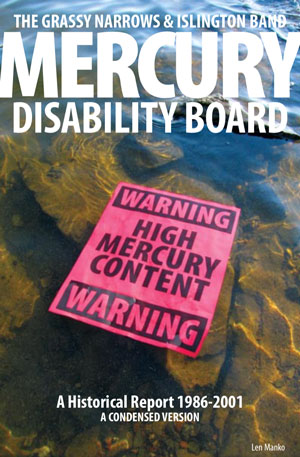
Mercury Disability Board
A Historical Report: 1986-2001
The full report (available here) consists of three volumes. It was written by a university student, Sylvia Cosway, who was working on her Ph.D. at the University of Manitoba. The entire study covers over 400 pages in a language more suited to readers with special training in medicine and chemistry. This booklet is written in a simpler style. It avoids many highly technical terms as well most of the details useful primarily to professionals.
